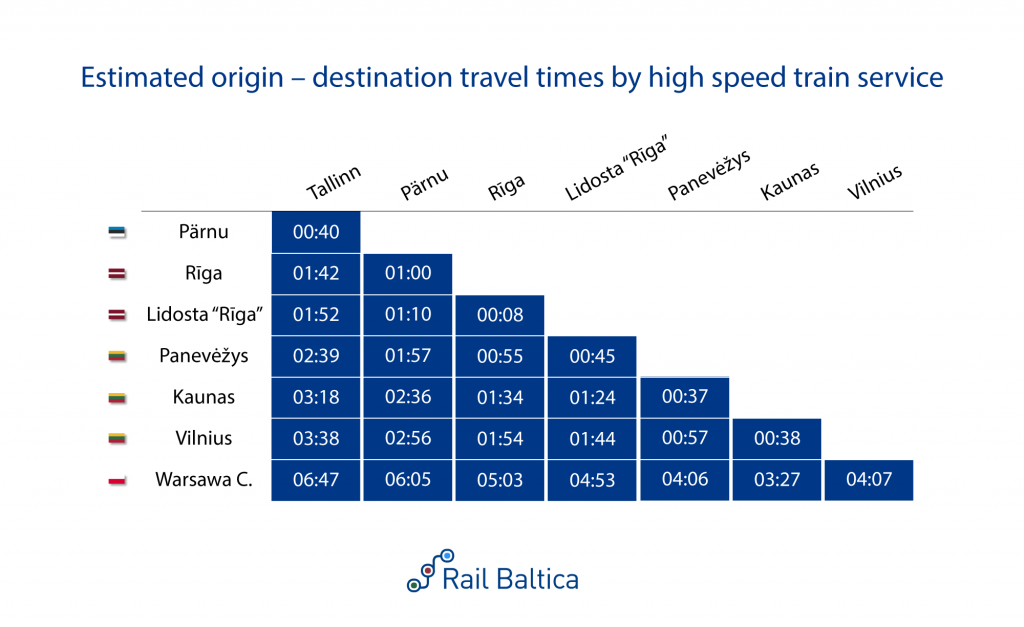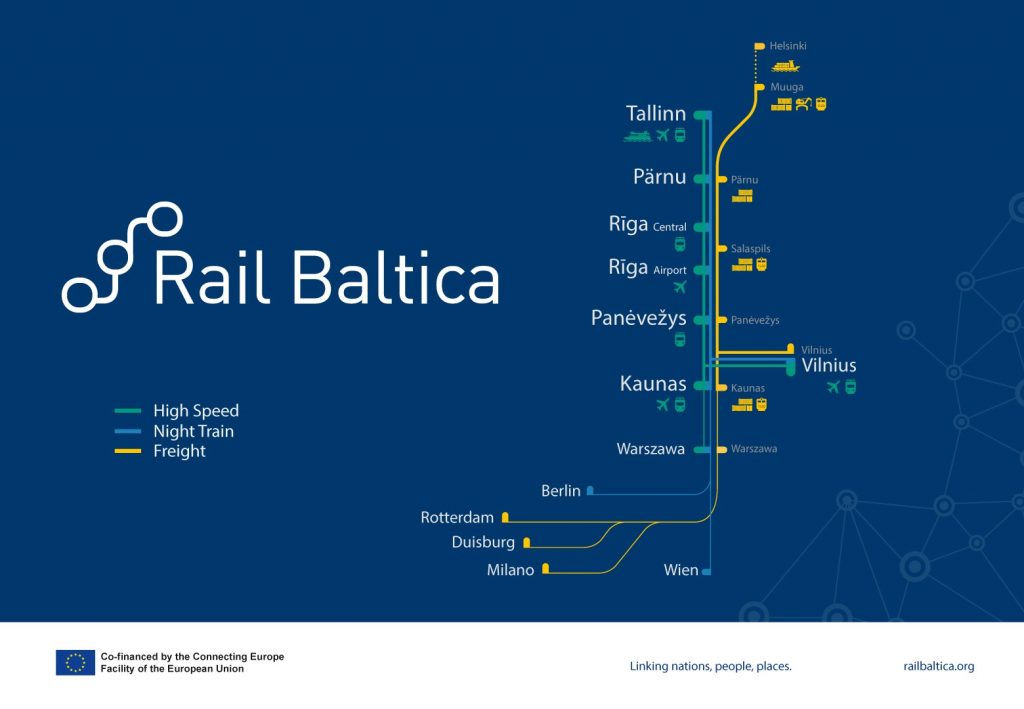Fast speed trains between the capitals will run every two hours

Rail Baltica high-speed trains from Tallinn to Warsaw and from Tallinn to Vilnius are estimated to run four times per day once the line is launched and up to six times per day within 10 years of operations. Additionally, up to ten trains per day will run on Vilnius-Kaunas-Warsaw route. As a result, Rail Baltica will provide a fast rail connection between the Baltic capitals every two hours.
In addition, the plan includes two night-trains on the route Tallinn-Riga-Kaunas-Warsaw-Berlin and Vilnius-Kaunas-Warsaw-Berlin, enabling passengers to travel further to other destinations in Europe.
Furthermore, travelers will be able to reach Riga International Airport from the Riga Central Station in around 10 minutes, with minimum one train every 30 minutes.
The frequency of the high-speed trains is based on the anticipated passenger demand, which was assessed in the Rail Baltica Operational Plan for 2026 – 2056. Developed by the German company ETC Gauff Mobility GmbH, in consortium with COWI A/S (Denmark) and Institut für Bahntechnik GmbH (Germany), the plan reflects a modern, integrated approach, where market demand and development is set as the main criteria after which the timetable is defined.
“The main outcome of the operational plan is to indicate how the Rail Baltica infrastructure will meet the transport demand in medium and long term, guaranteeing capacity for all types of train services. This plan will be used to ensure that Rail Baltica track is used efficiently from the first day of its operations and allowing to scale-up passenger and cargo services after the phase-in period,” says Jean-Marc Bedmar, Head of Systems and Operation Department at RB Rail AS.
Cargo trains

According to the plan, 2-3 cargo trains per hour with the maximum speed up to 120 km/h will run on the Rail Baltica line. The estimated axle load of trains is 25 tons and length of trains – 1050m. To facilitate freight movement on the line, three large-scale multimodal terminals are being developed – in Muuga (Estonia), Salaspils (Latvia) and Palemonas (Lithuania).
It is expected that 80% of freight trains on Rail Baltica will be intermodal trains, allowing logistic operators to move the freight from roads to rail, by putting containers and trucks on wagons. Important reduction of the air pollution and road traffic congestion are expected, as well as improvement of the overall road traffic safety.
Regional and cross-border regional trains
The high-level assessment carried out within the Operational Plan reveals a potential of regional train development in all three Baltic states, with maximum speed 200 km/h. This means that Rail Baltica tracks can be used not only for international train services but also for regional and cross-border regional services, bringing the fast and clean transport mode to different locations throughout the whole Rail Baltica corridor.
For example, the plan suggests a sufficient passenger demand to run regional train services from Bauska to Rīga, from Salacgrīva to Rīga (Latvia), from Pärnu to Tallinn (Estonia), and from Marijampole through Kaunas to Vilnius (Lithuania). Furthermore, the plan indicates a feasible demand for regional cross-border traffic, such as from Marijampole to Rīga (Lithuania-Latvia), or from Tallinn to Riga airport (Estonia-Latvia). It should be noted however, that the future of the regional traffic development on Rail Baltica will require additional studies and governmental decisions.
About operational plan
The Operational Plan is based on consolidated studies of passenger and cargo demand for Rail Baltica corridor and defines timetables and types of trains on the line. In addition, the plan includes benchmarked usable rolling stock, indicative locations of infrastructure and rolling stock maintenance facilities as well as detailed track layouts. The main outputs of the Operational Plan will be used for further phases of studies, including the Detailed Technical Design of Rail Baltica infrastructure.
